Designers: Hussain Almossawi & Marin Myftiu
Following the recent electric revolution of lightweight vehicles around the world, the nThree is our new design, following the very successful nCycle e-bike concept. With the irreversible process of global economies turning towards renewable energy, the way we see and use the city has already changed and is set to do so dramatically in the next few years.
With our increased awareness and sensitivity towards energy consumption, courtesy among others of the most recent economic crisis, in the last 4-5 years, personal transportation has begun a slow but steady drift away from the model we have come to know in the past century. The 10s and hundreds of new e-bikes and electric cars like the Renault Twizy or Toyota i-Road have shown the way to a more personal and conscious approach. Our new concept builds on the characteristics and refines the strengths of these vehicles to bring electric power even closer to the mass market.

nThree challenge. Small electric cars, tricycles and quadricycles all suffer from the same inherent drawback; they are meant to be cheap and affordable but they end up being expensive like real cars because they are BUILT like real cars. The mission on the nThree was to address these conceptual and design shortcomings and design an affordable, single-seat electric vehicle that would offer all (or most) of the comforts of an electric car at the cost of an e-bike.
To achieve the objectives, the nThree was built with a simplistic approach reminiscent on the nCycle. In first place, the vehicle was reduced to the most essential stable geometry of three wheels to reduce cost.
Price efficiency. Even though the latest small electrics are a great way to move around the urban areas, there is something about these offerings that does not look great at all: Price. Starting from about 7000 Euros and above these 1-2 seaters cost almost as much as a cheap standard car and more than many used ones in good condition.
Sketches
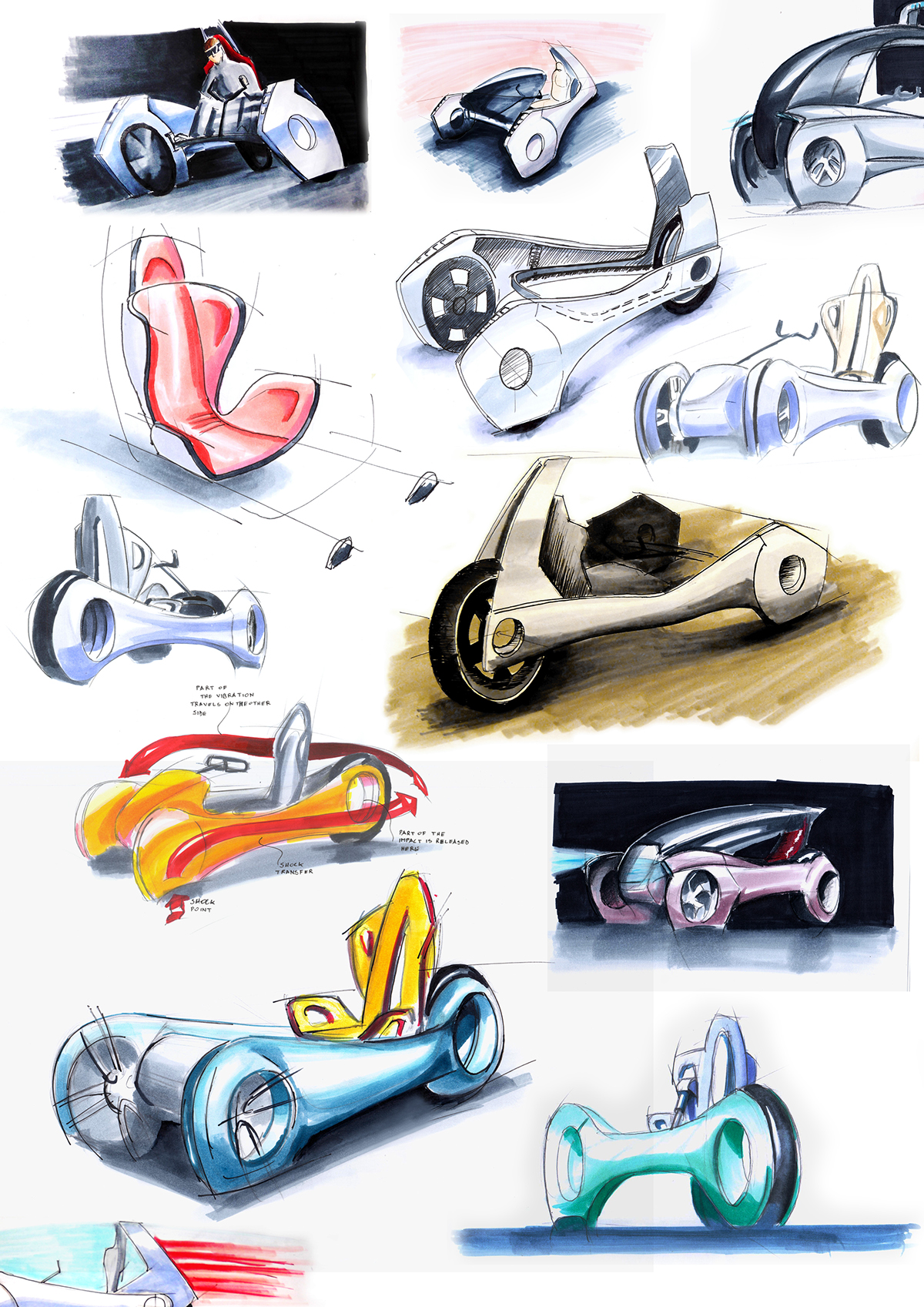
Blueprints

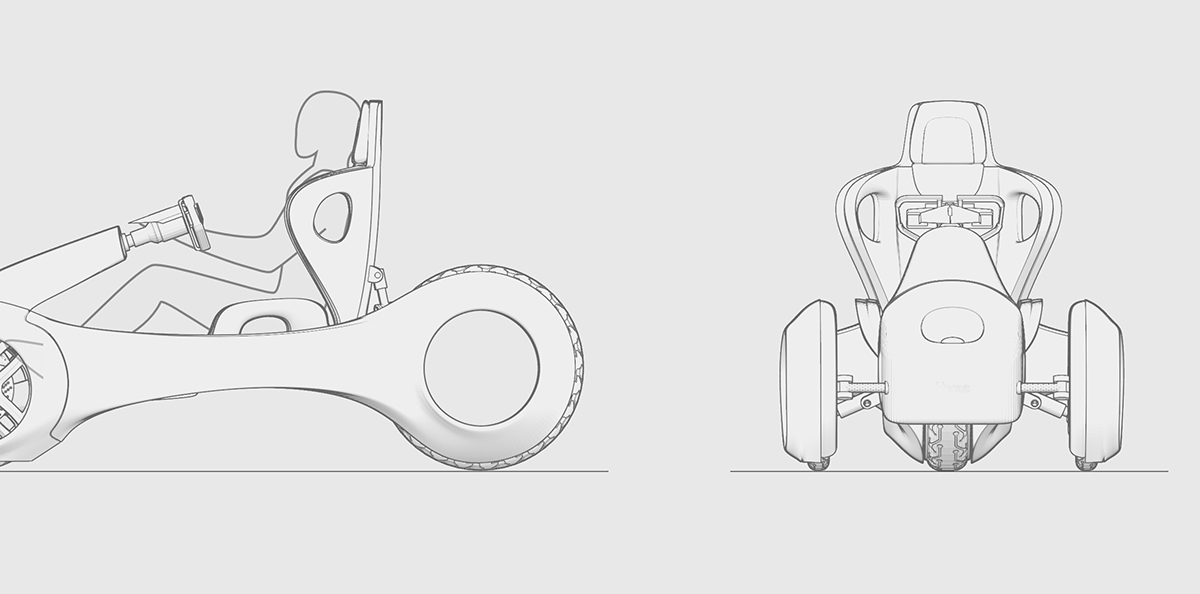
Clays
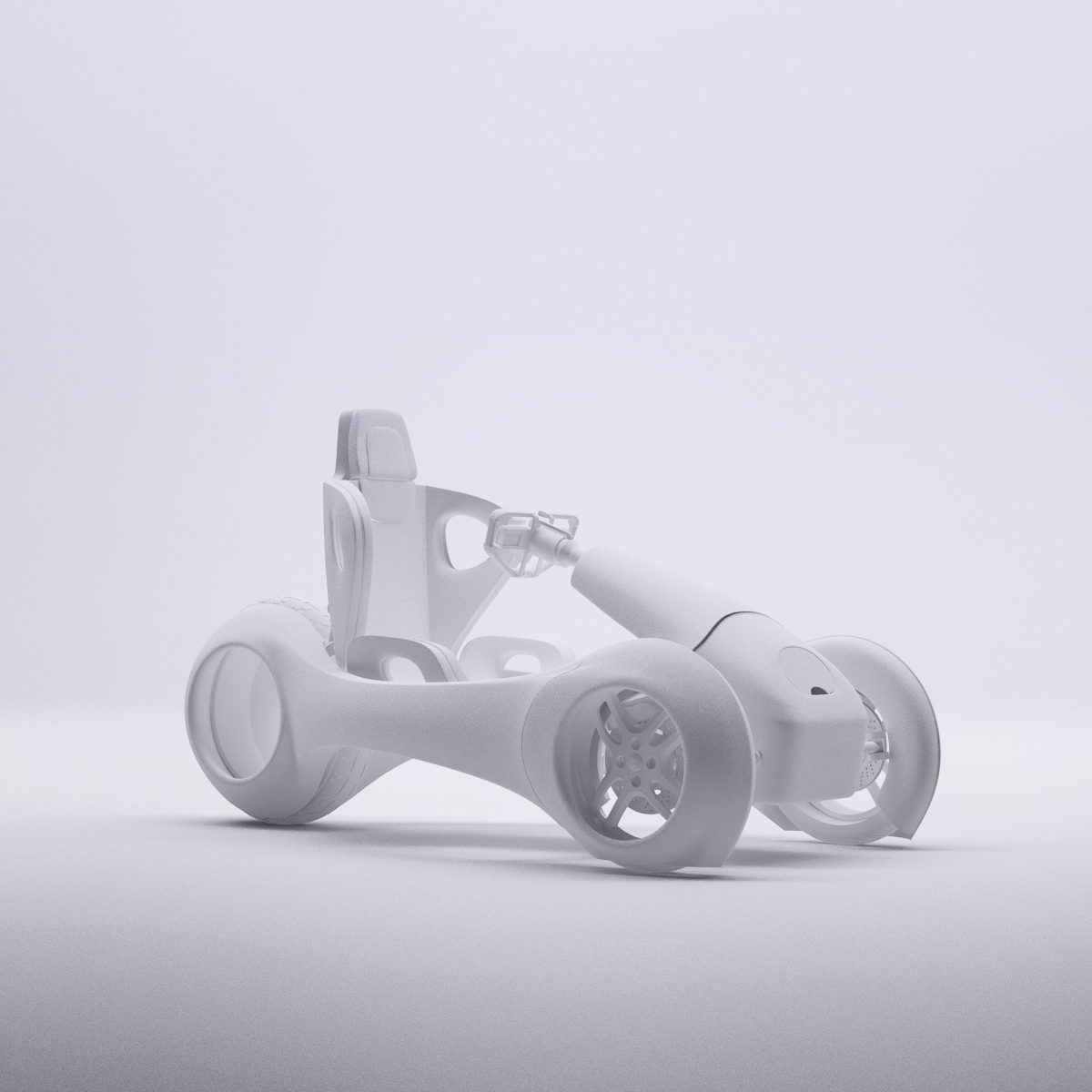
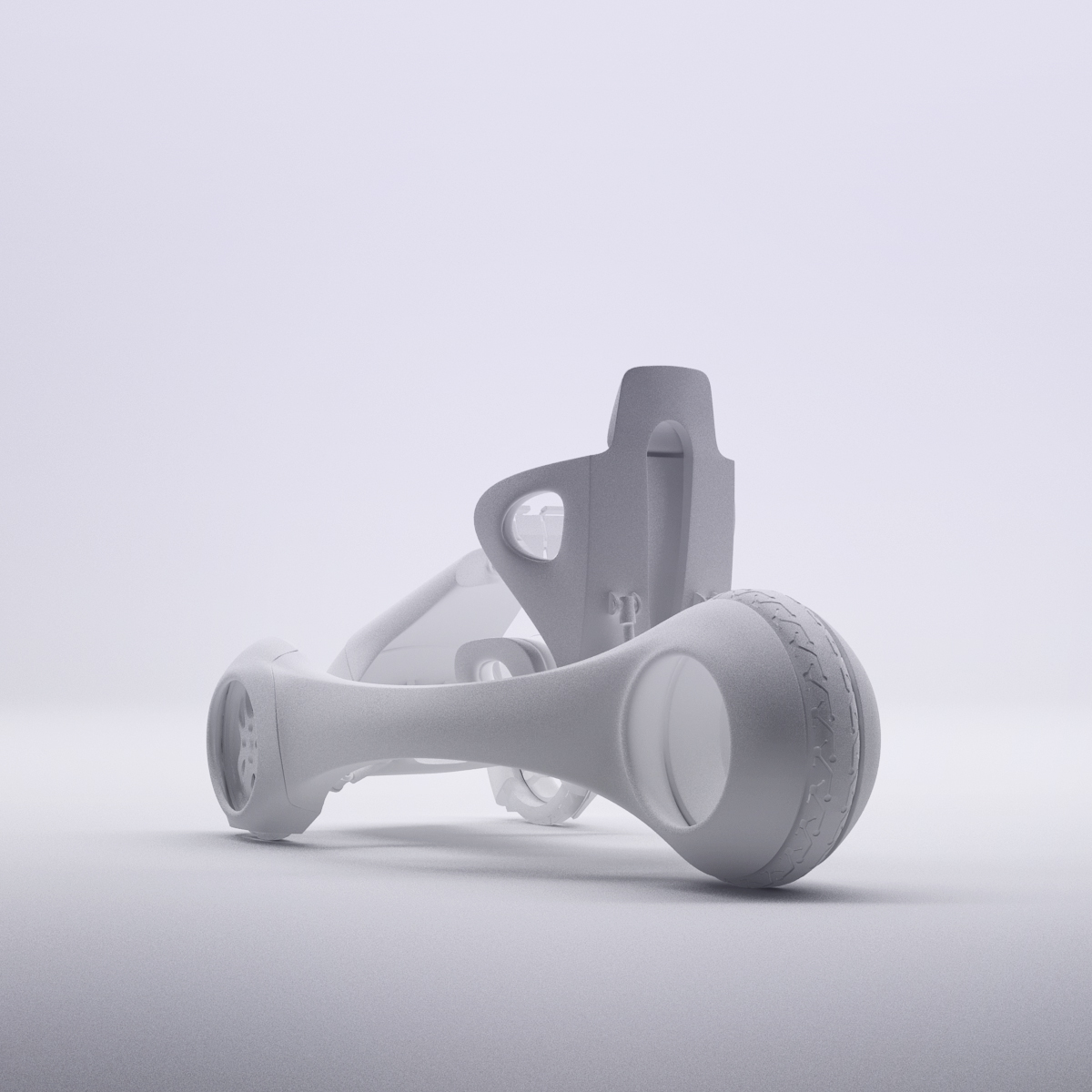
Inspiration
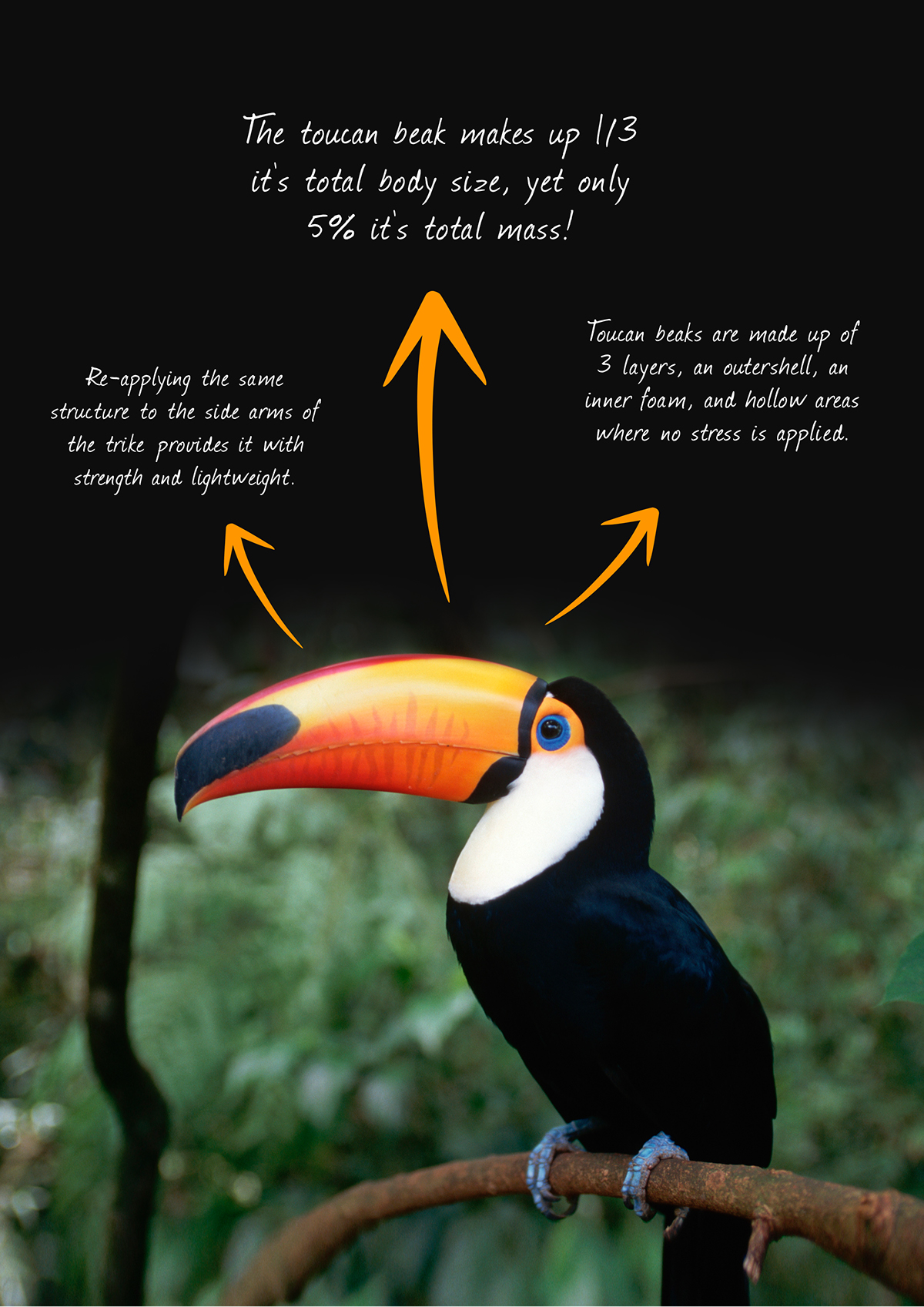
Build. Unlike the Twizy and the i-Road, the nThree does not have an expensive car-like transmission or a sophisticated rear wheel turning and power system. The power is discretely applied to the rear wheel only by means of an in-build motor, just like in many e-bikes while the steering is again very traditionally applied to the two front wheels.
All the above measures and a simple “Y” shaped body structure will ensure a significant reduction in weight. Internally shaped and modeled like a toucan beak, the two side arms have a thin and lightweight section which is also strong to shock and impacts. In order to mimic this functionality, we ran a stress analysis test on the side arms to figure out the areas being stressed out most on the body, and to try to better distribute the stress based on the profile shape of the arm and the different areas it connects with the other parts of the nThree.
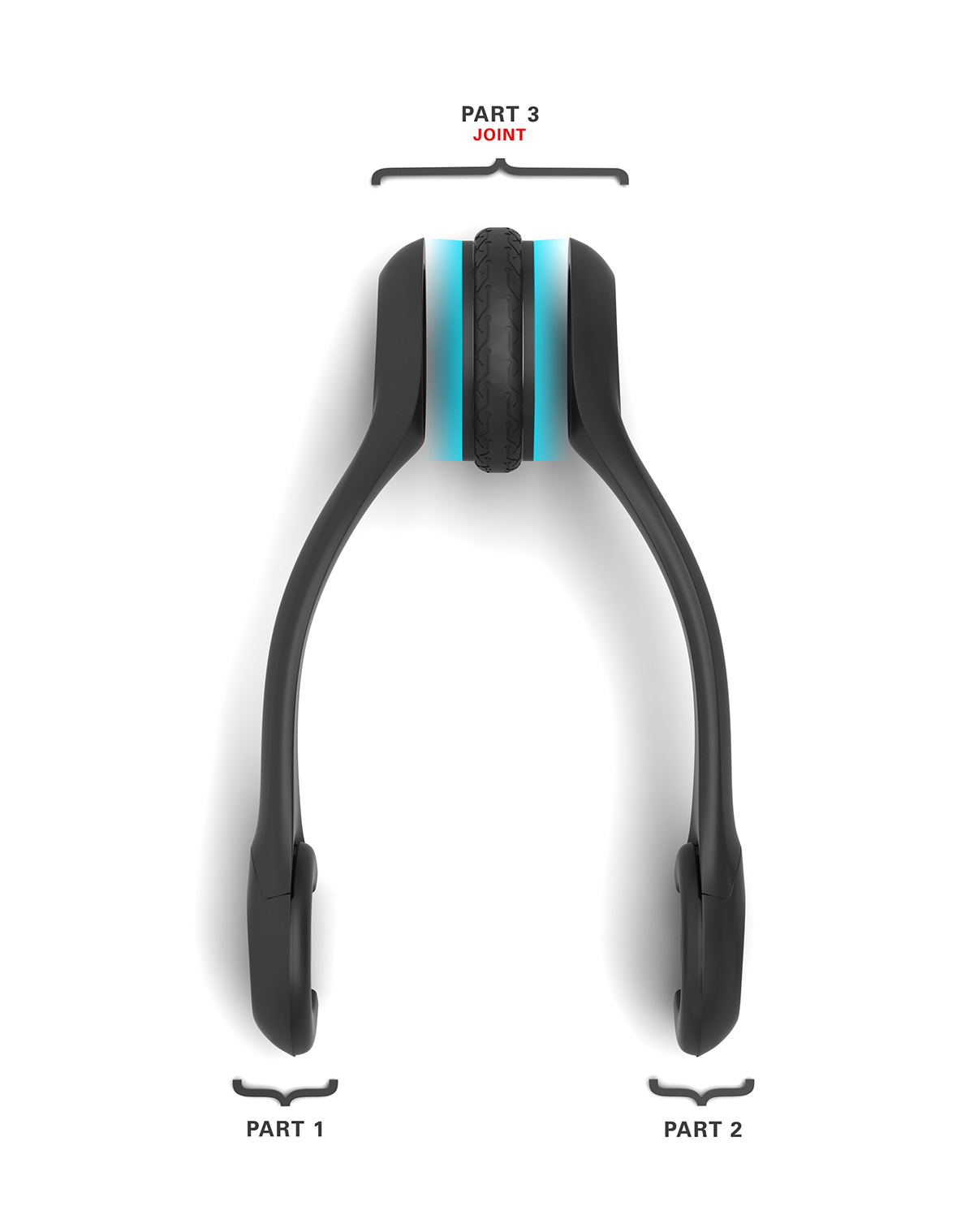
Side arms. A section of the side arm was cut and analyzed. The stress analysis test showed higher stress levels closer to the places that apply force to the arms; such as the middle seat section or when a person actually sits inside the trike and interacts with it. The red colors represent the areas with the most stress, while the blue regions have the least stress. The idea is to use three layers to make up the side arms, just as it is in the Toucans beak. The whole body will be covered with carbon fiber material. The green to red regions will fill the inside of the arms with foam material, while the blue regions will remain hollow to help with weight reduction.
The distribution of the material based off the stress analysis test would be as follows, mimicing the same concept of the Toucan's beak:
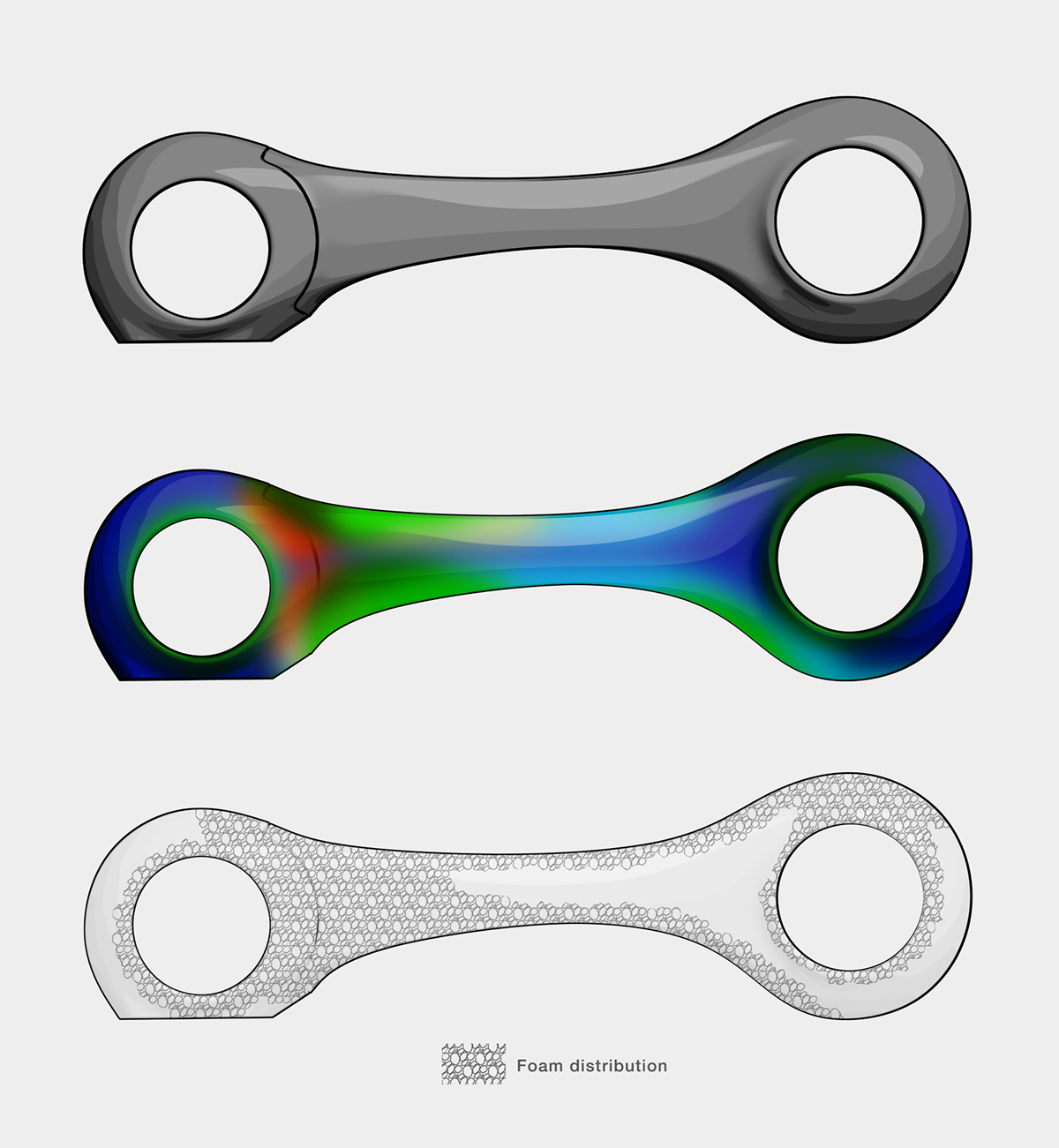
Seat. The seat is also modeled with several openings and reinforced, oversized sections to be as light as possible and ensure the driver’s safety.
Compared to similarly proportioned vehicles weighting about 300-500Kg, the nThree is expected to weight only around 100 Kg or less depending on the materials and hardware used. This will translate in a much higher power efficiency and lower energy consumption.
Compared to similarly proportioned vehicles weighting about 300-500Kg, the nThree is expected to weight only around 100 Kg or less depending on the materials and hardware used. This will translate in a much higher power efficiency and lower energy consumption.
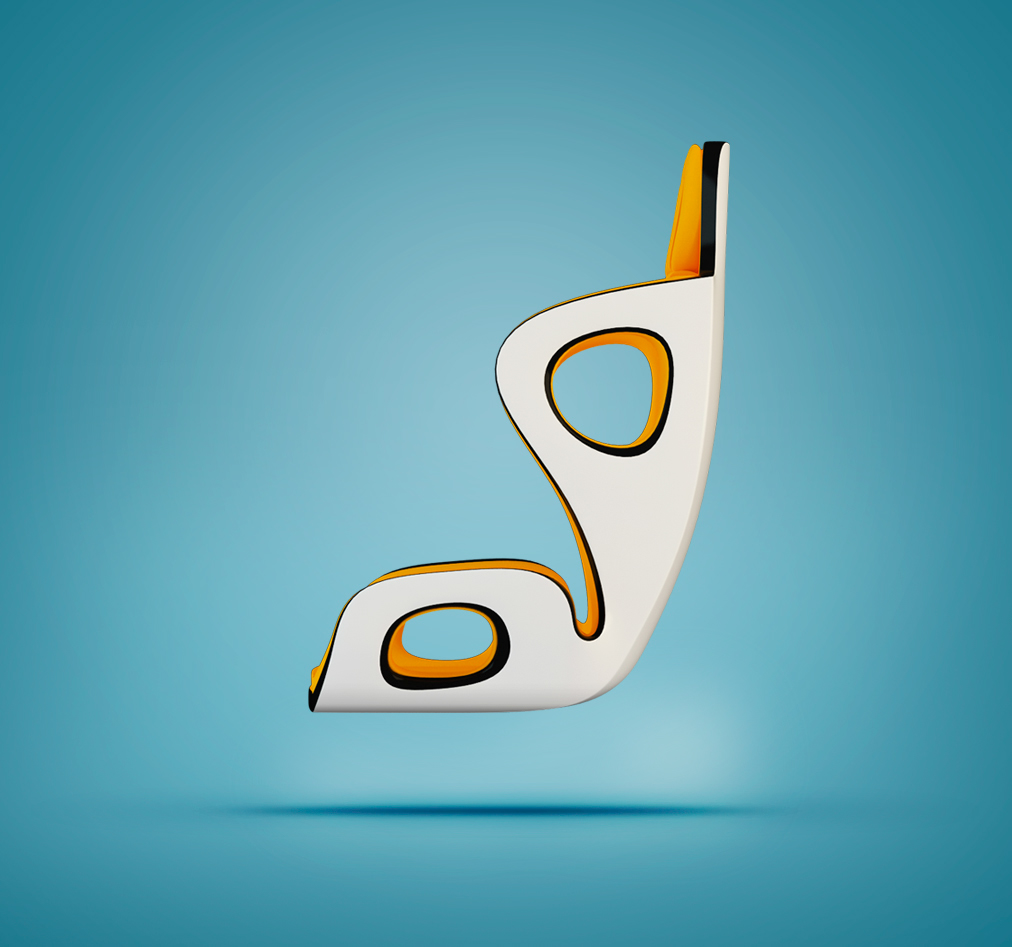
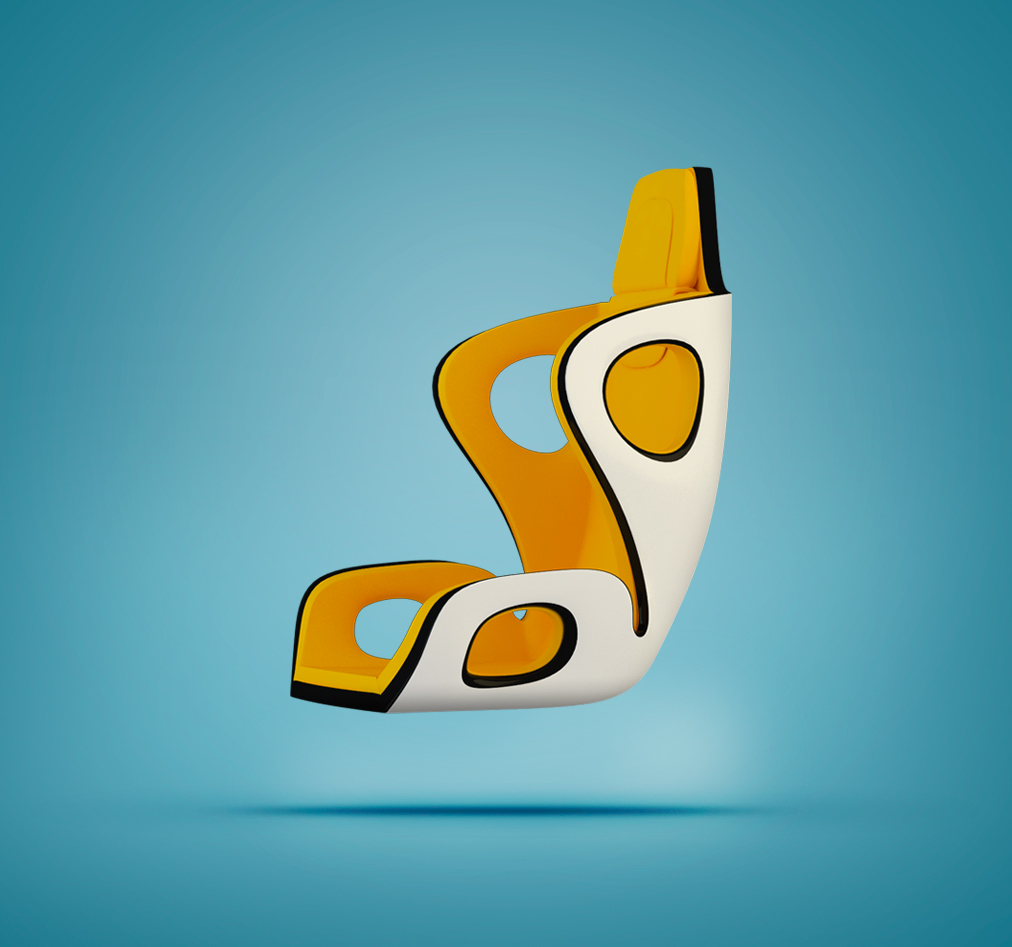
Studio Renders
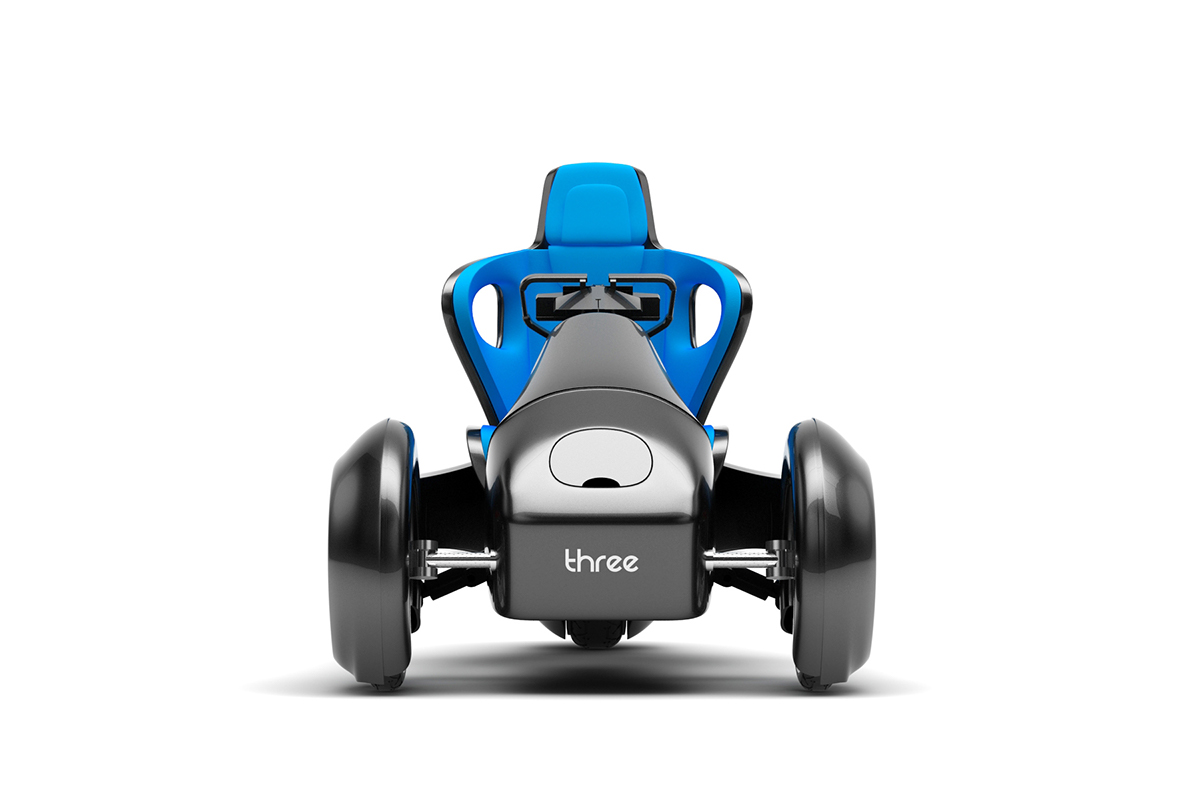
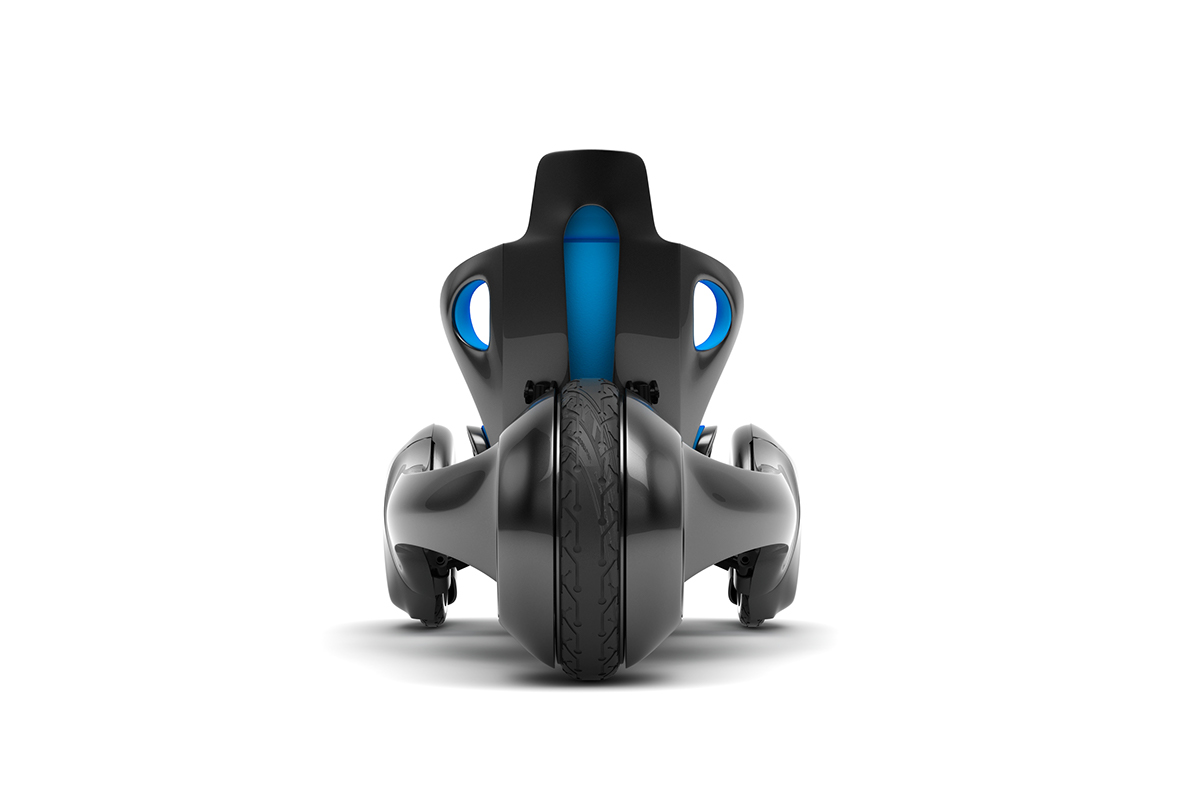
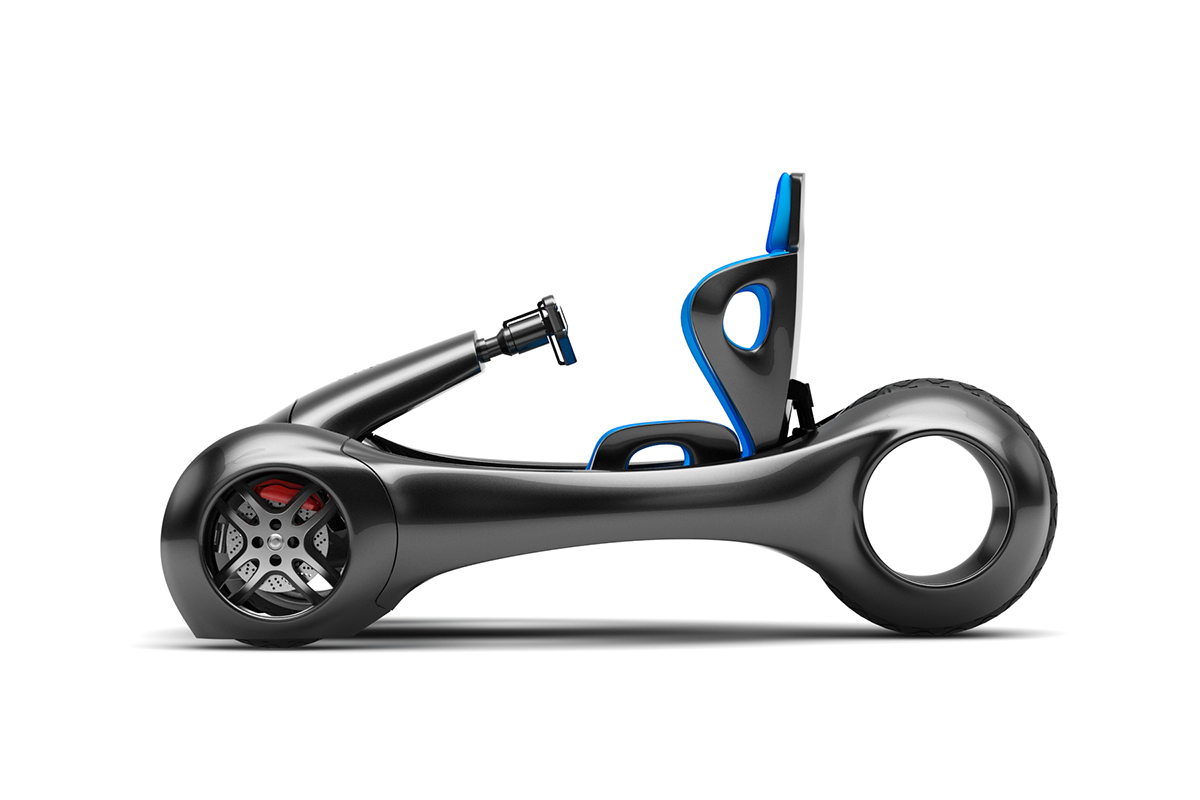
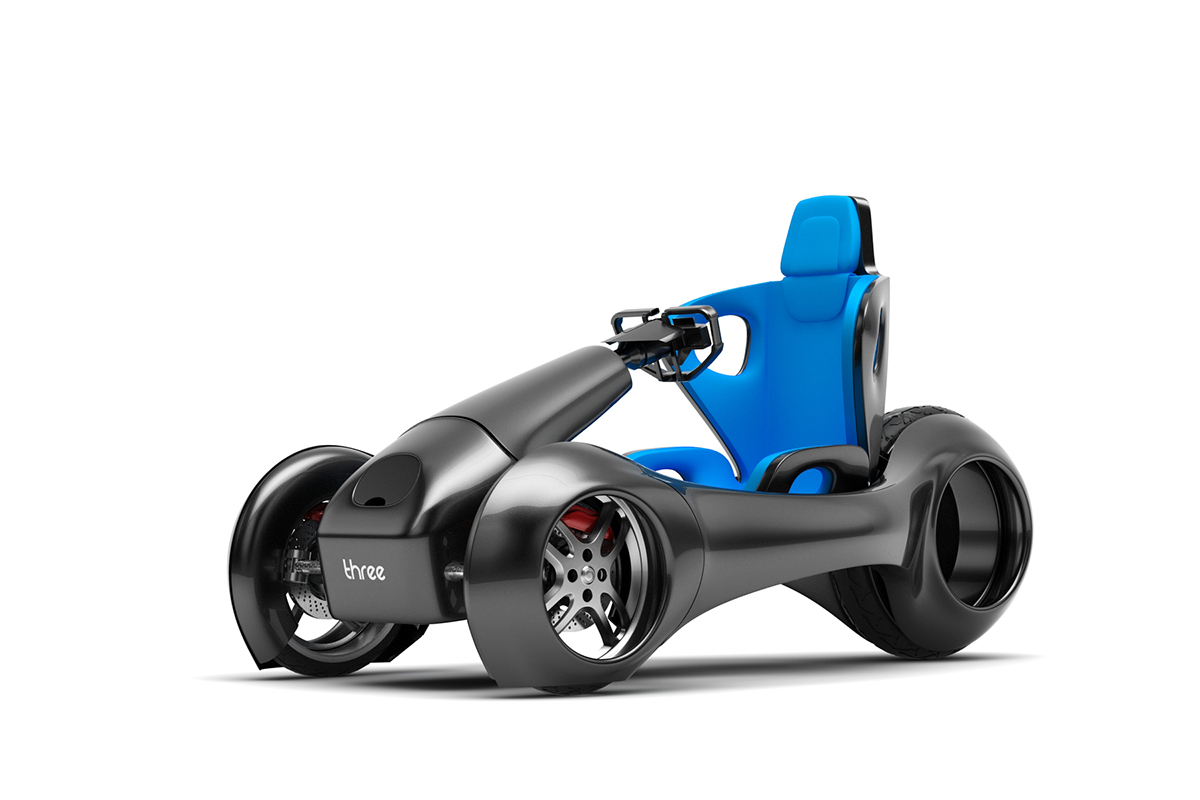
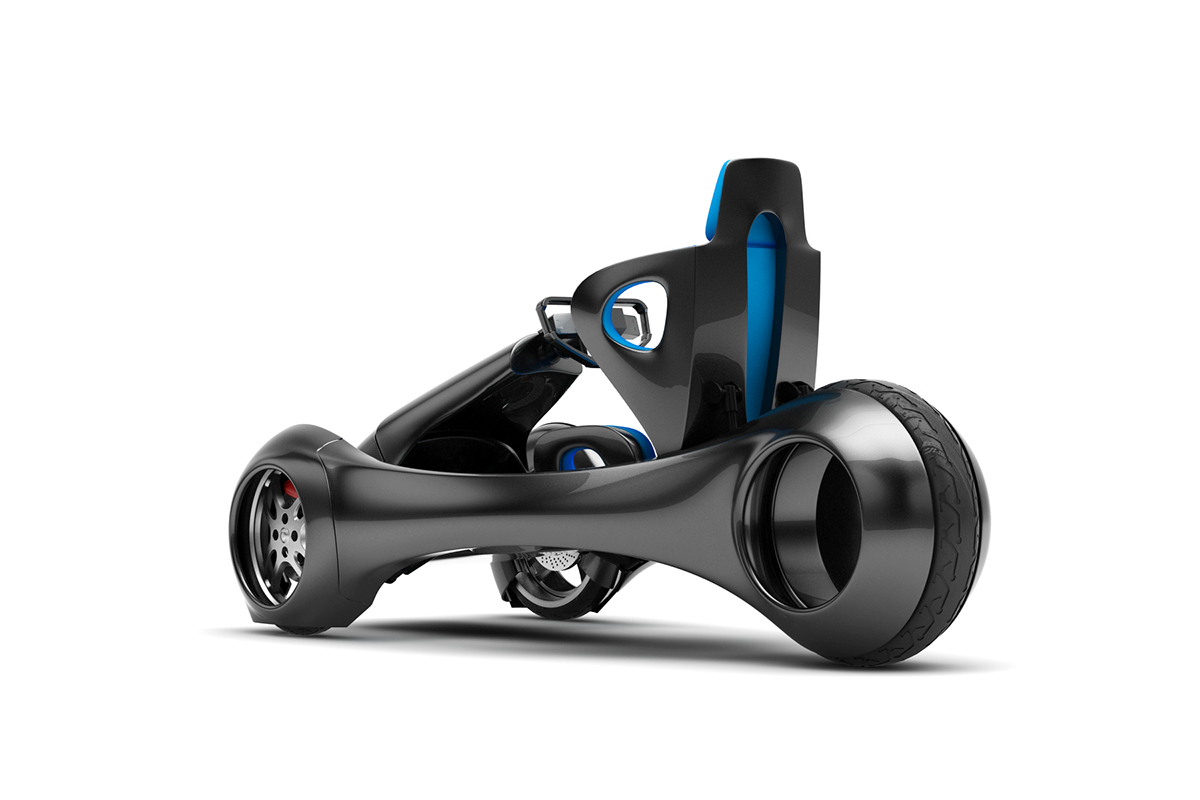
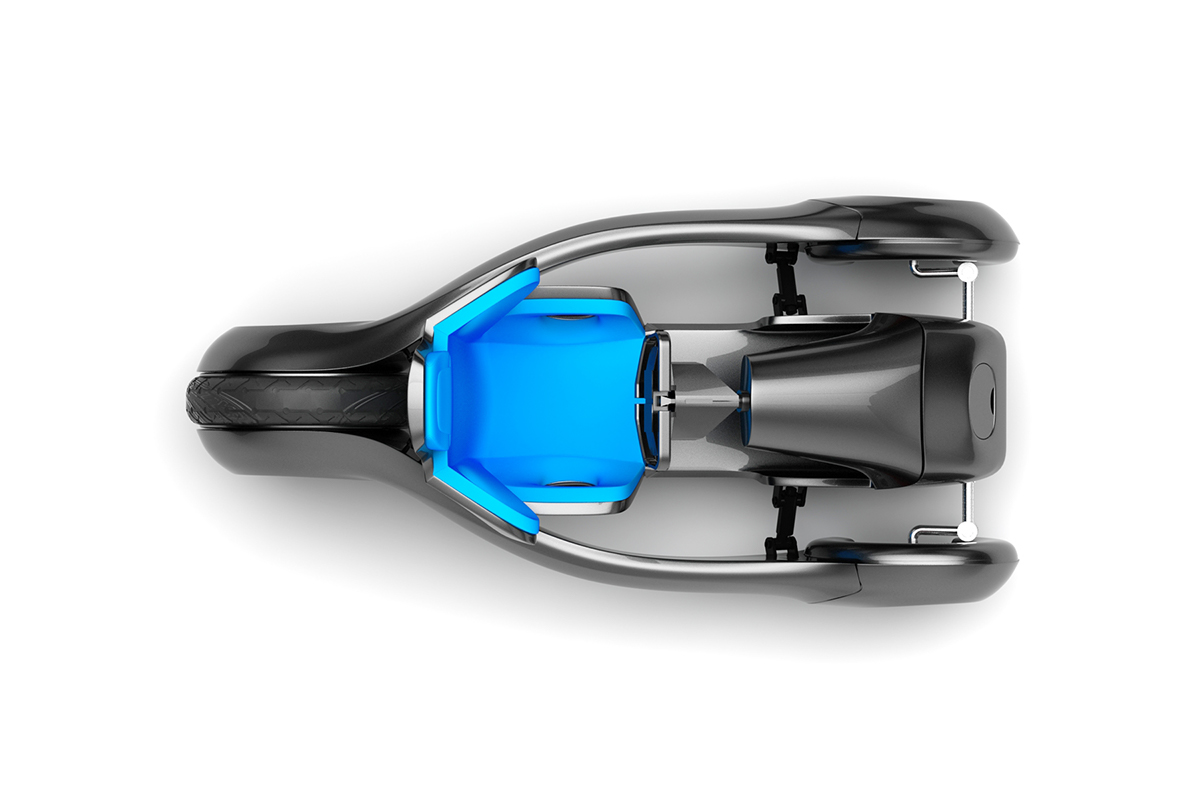
Removable cover. Because the nThree is a hybrid between an e-bike and an electric car, it will provide a lightweight, removable cover to shade the driver from the sun or protect it from the rain and wind. Unless you chose to put the cover on, driving the nThree will be just as fun and ventilating as riding a bicycle.
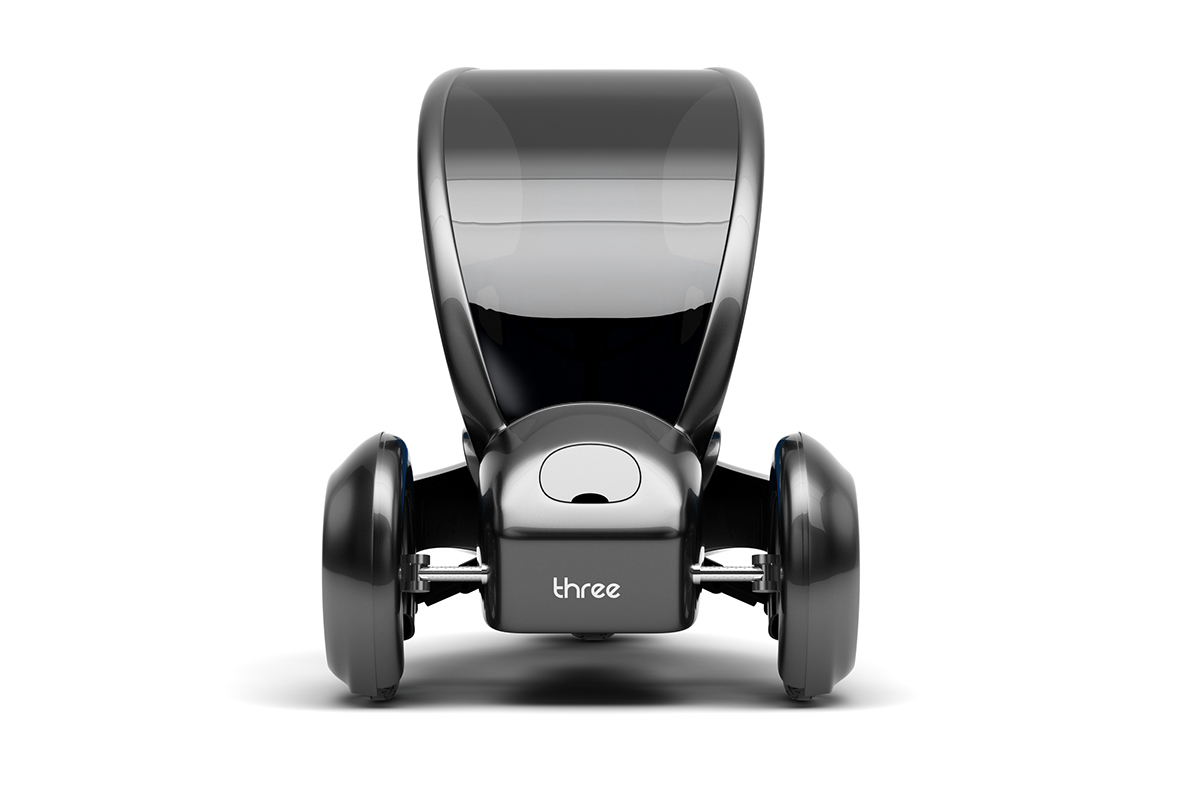
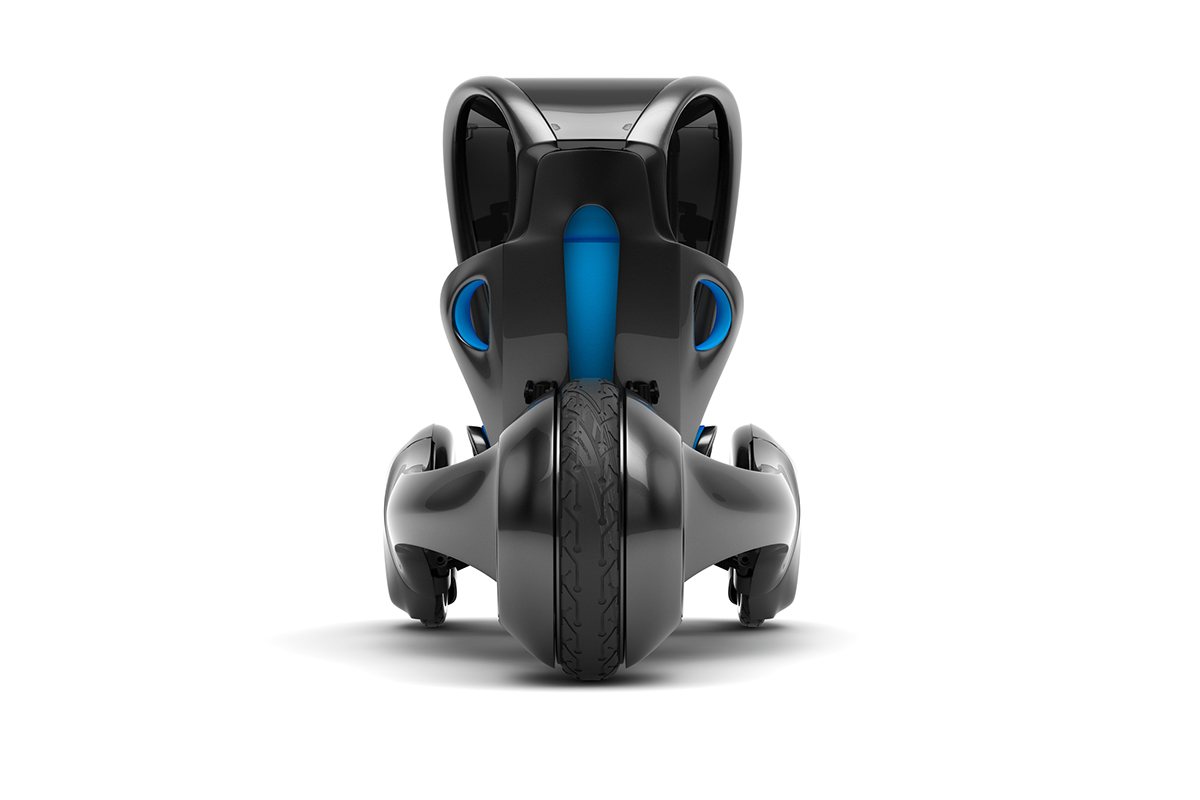
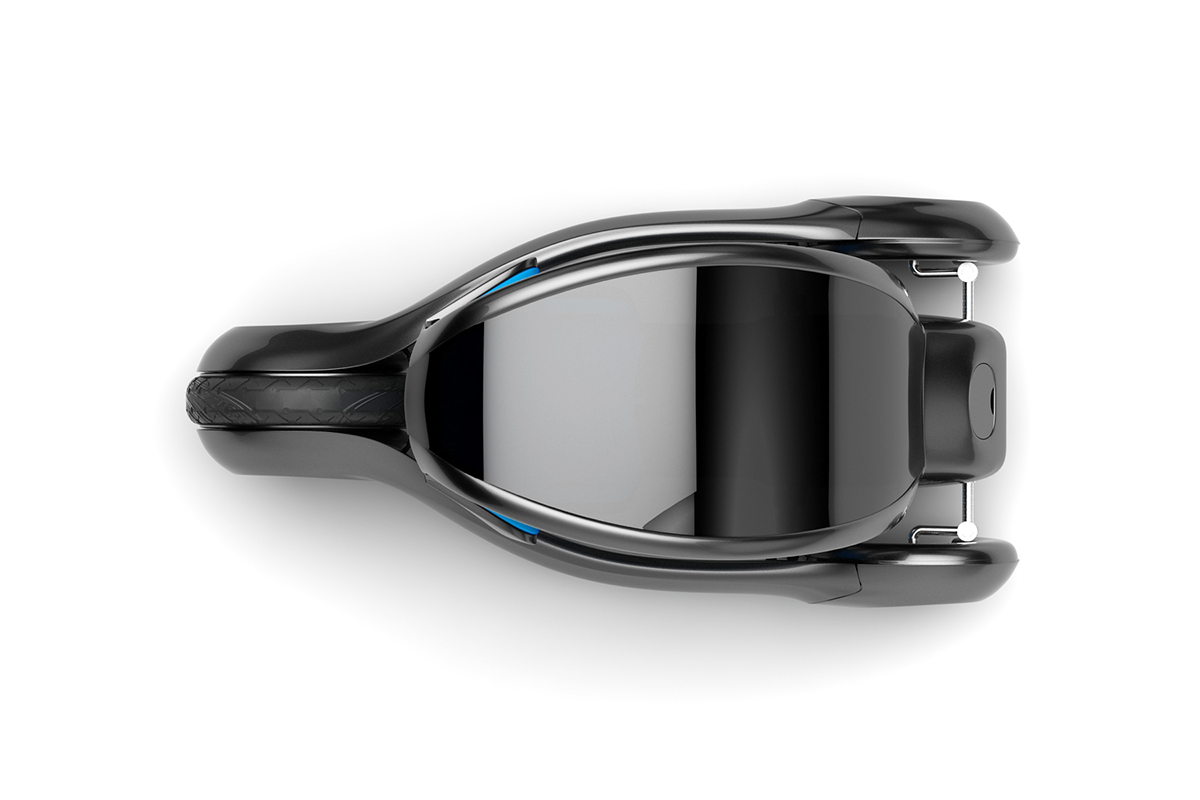
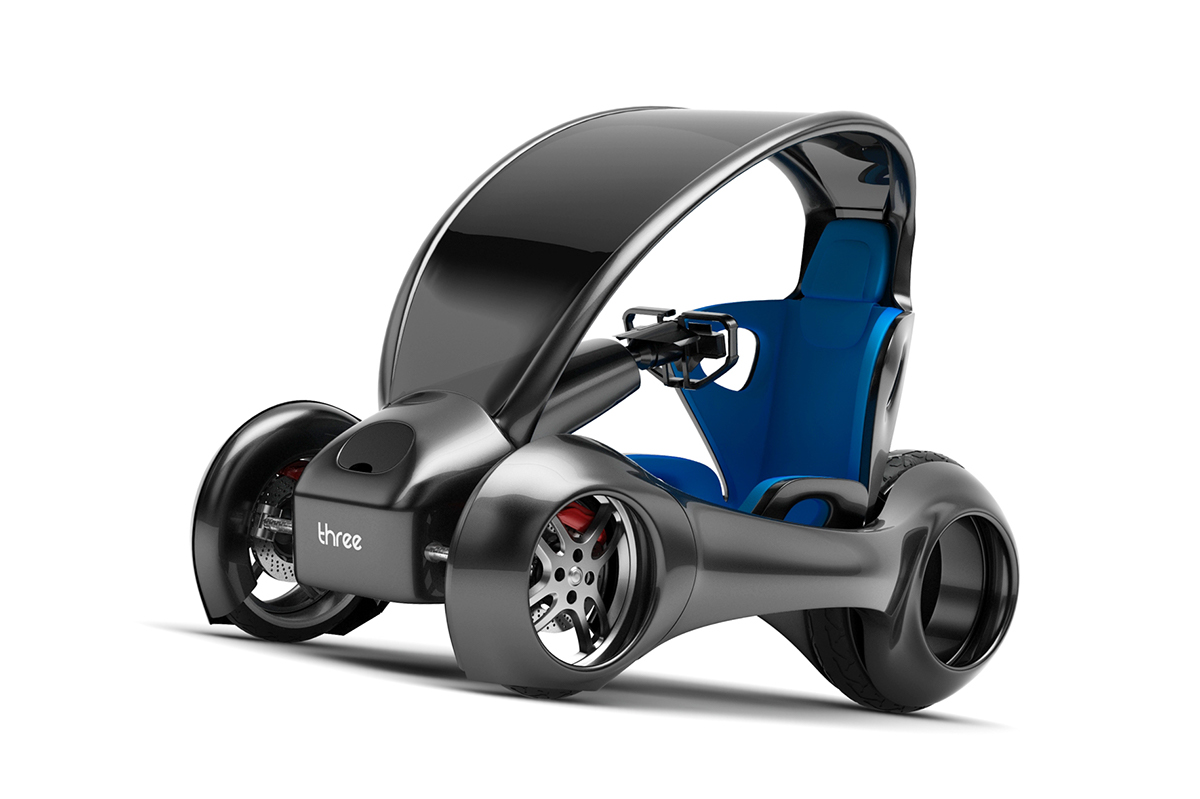
Movement
Tilting and shock absorbtion. To provide a lighter and more effective shock absorption system, the whole structure of the nThree is split in two symmetrical parts compositing the “Y” shape, both merging at the rear wheel. The seat and are then mounted on this structure on four shock absorbers.
The whole assembly allows to slightly tilt the vehicle mechanically while turning. Also, because of the split structure, the vehicle will have better stability in more hostile landscapes. Furthermore, each bump and road irregularity that affects one of the front wheels will travel to the rear wheel and then to the other side of the vehicle, providing double the length for much better shock absorbtion.
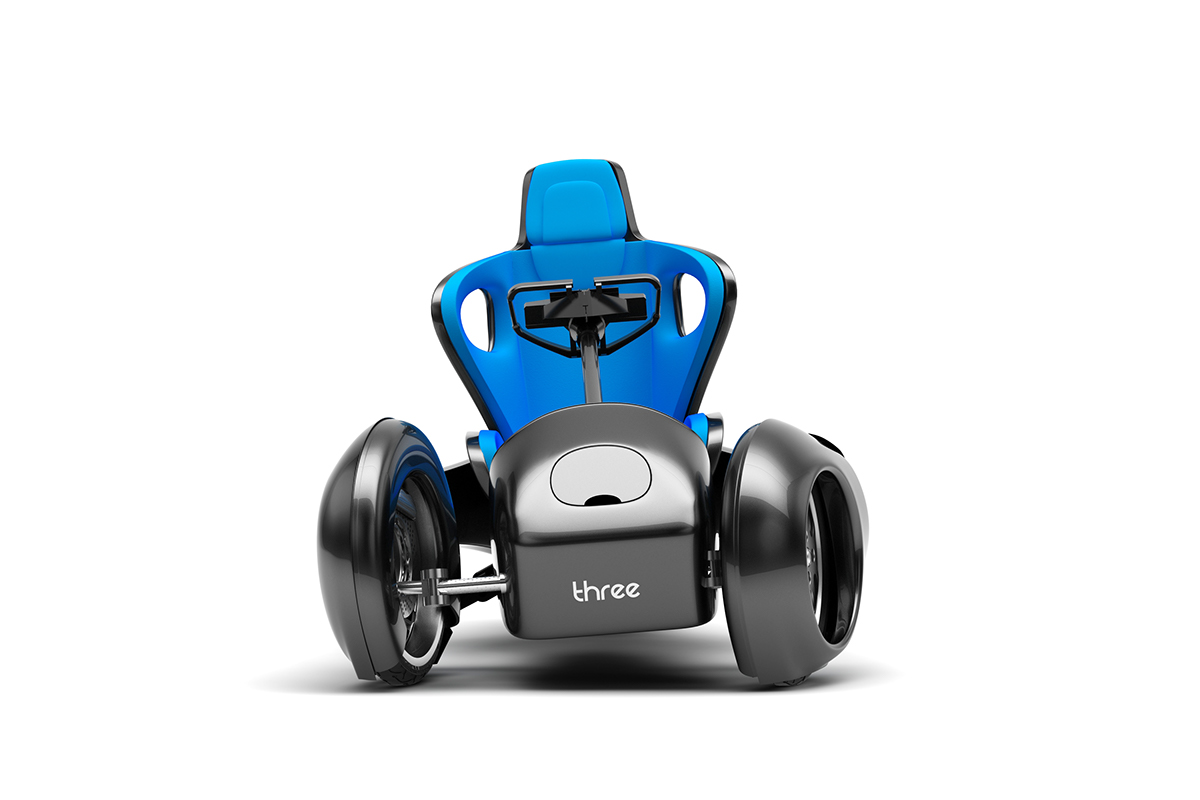
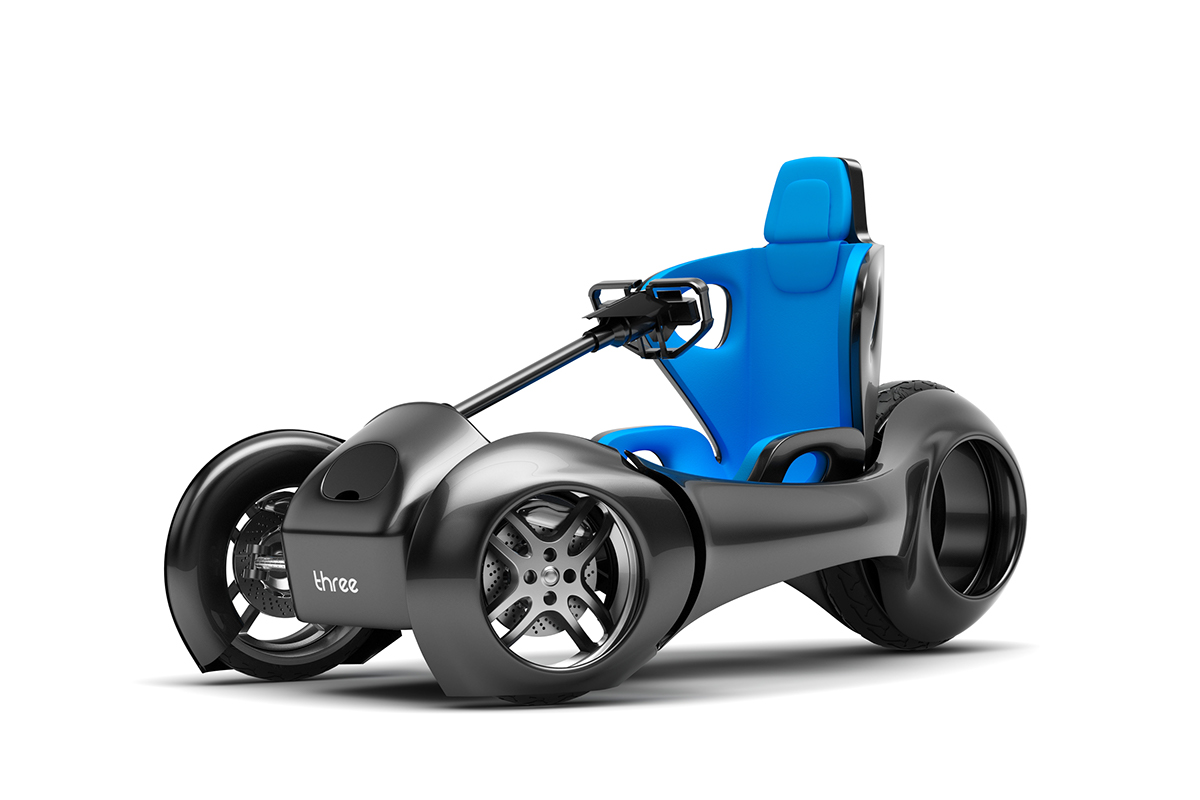
Charging
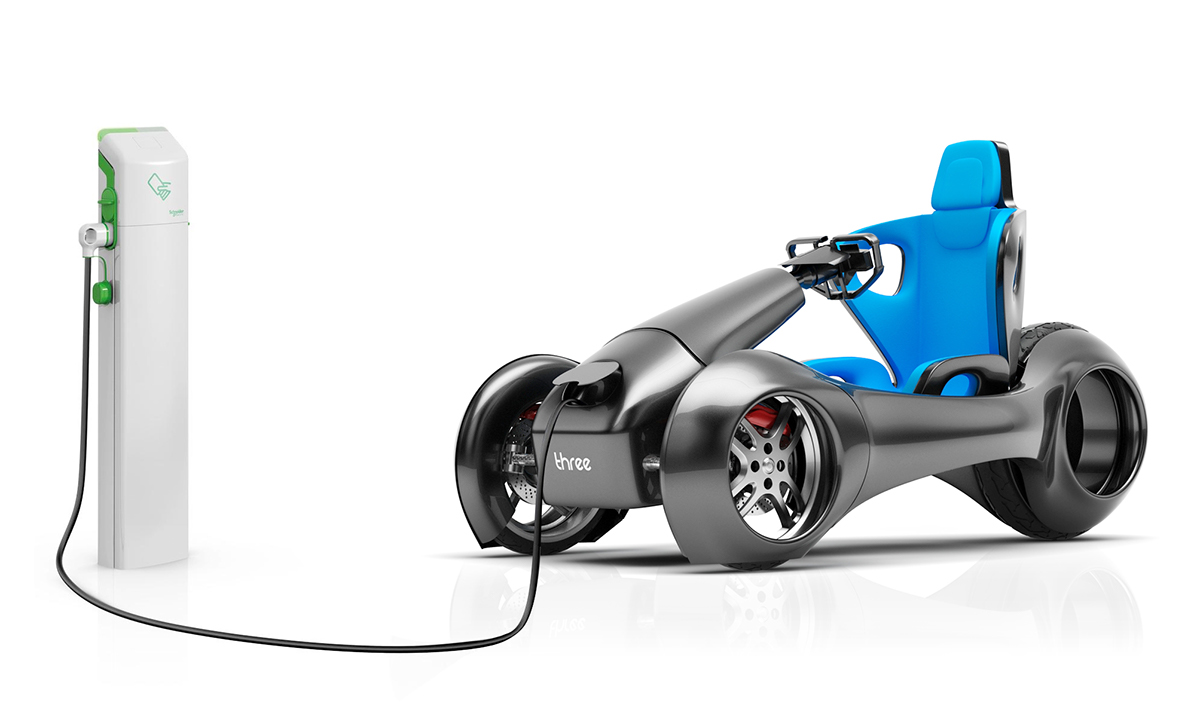
The front charging port, like most hardware complies with existing standards; it was designed with a retractible connector and placed frontally for best access.
Street Views
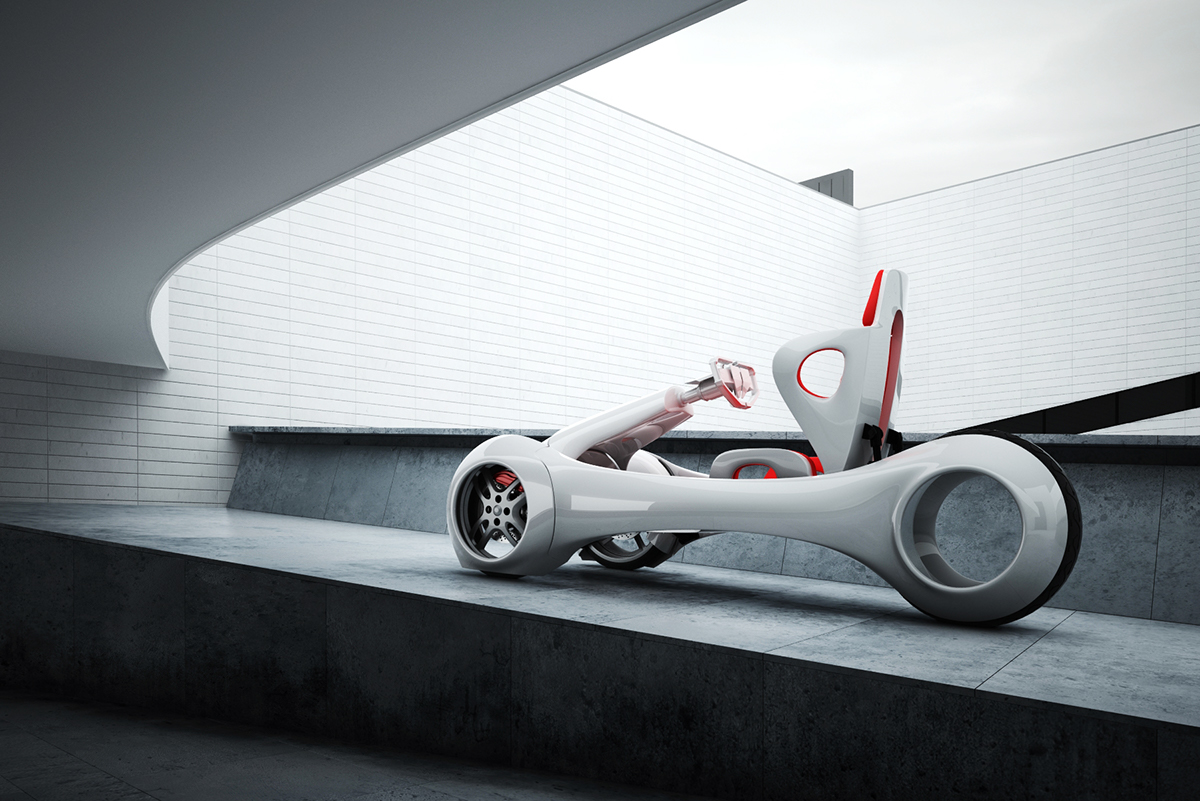
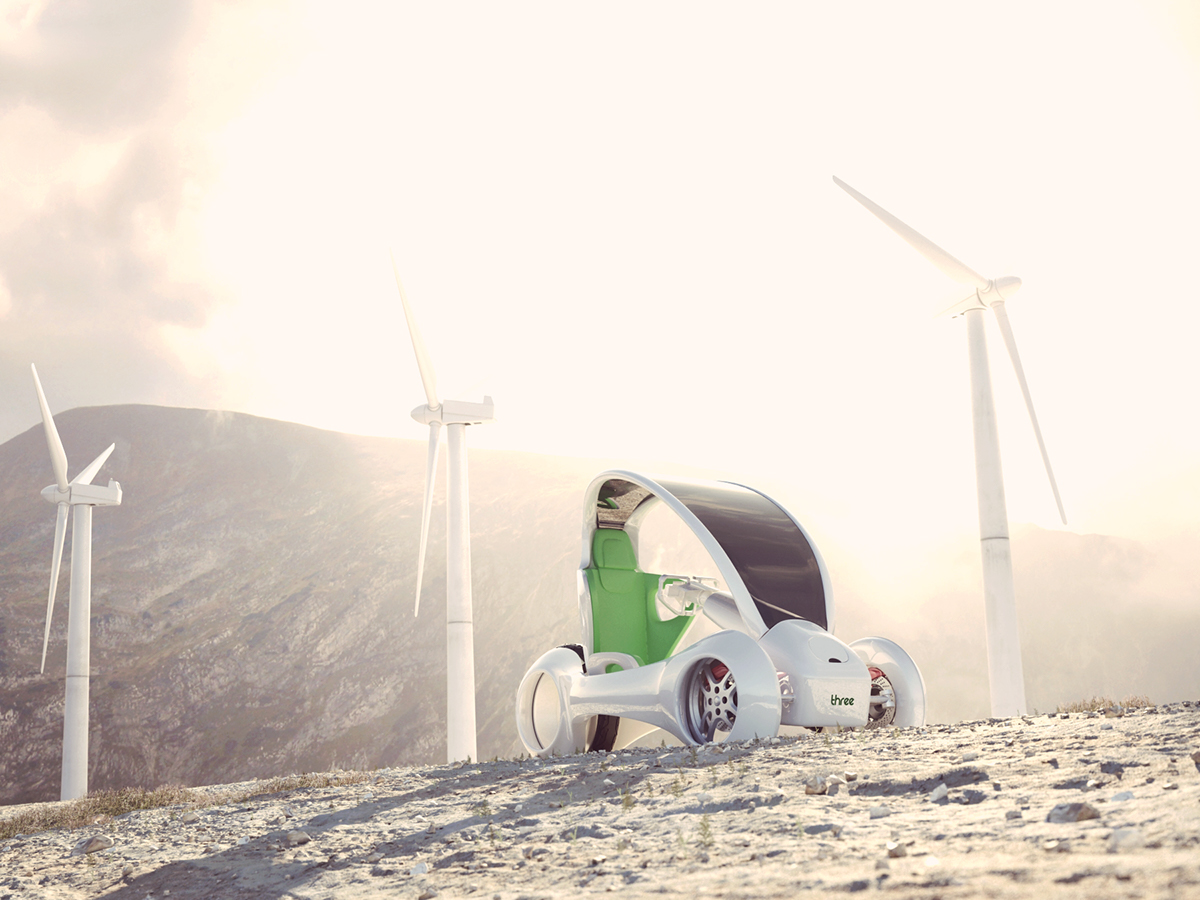
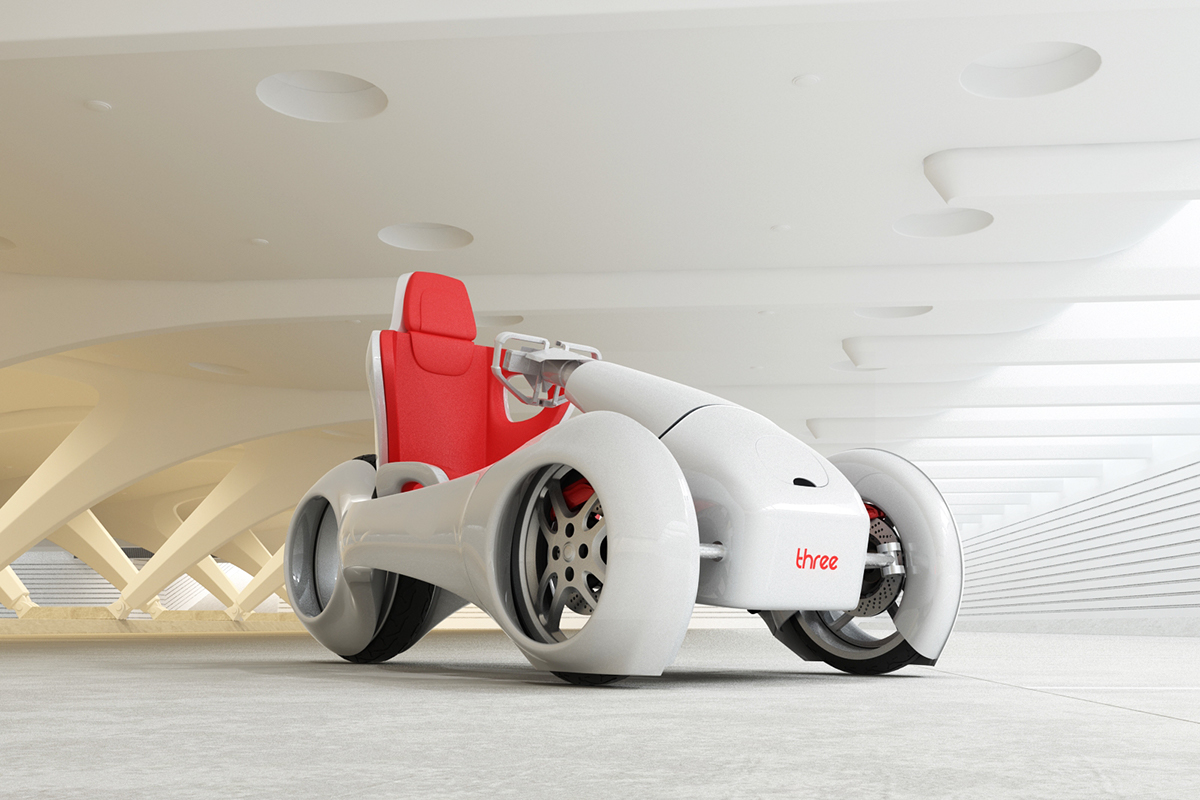
For media inquiries please email us at go@ncycle.net
Please don't forget to press
the "appreciate" button below
Thanks a lot!
the "appreciate" button below
Thanks a lot!


